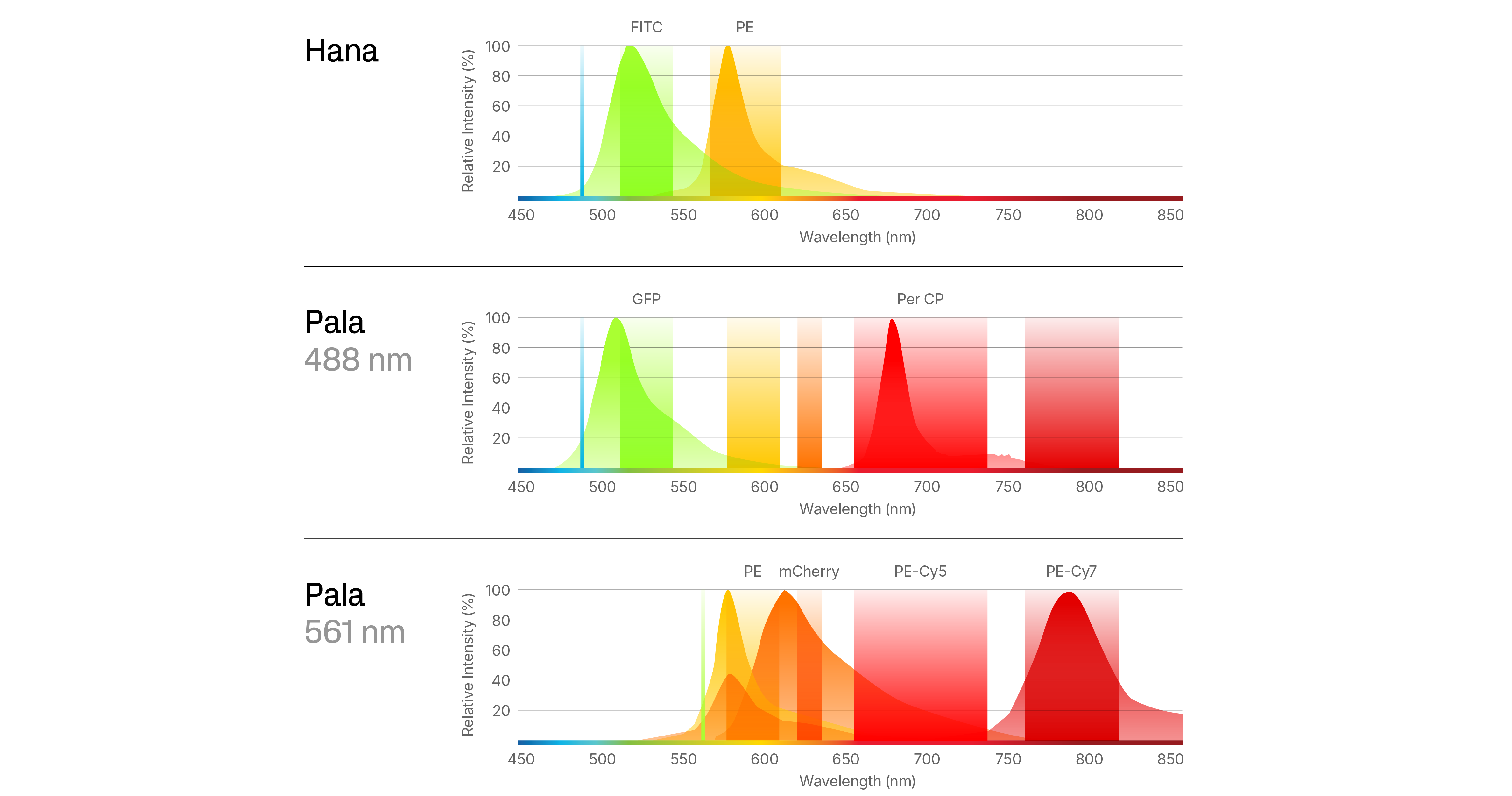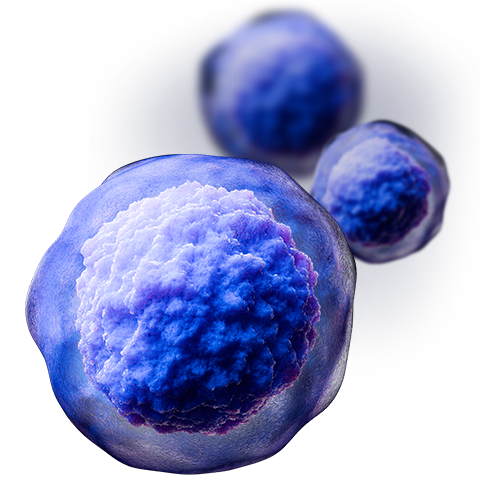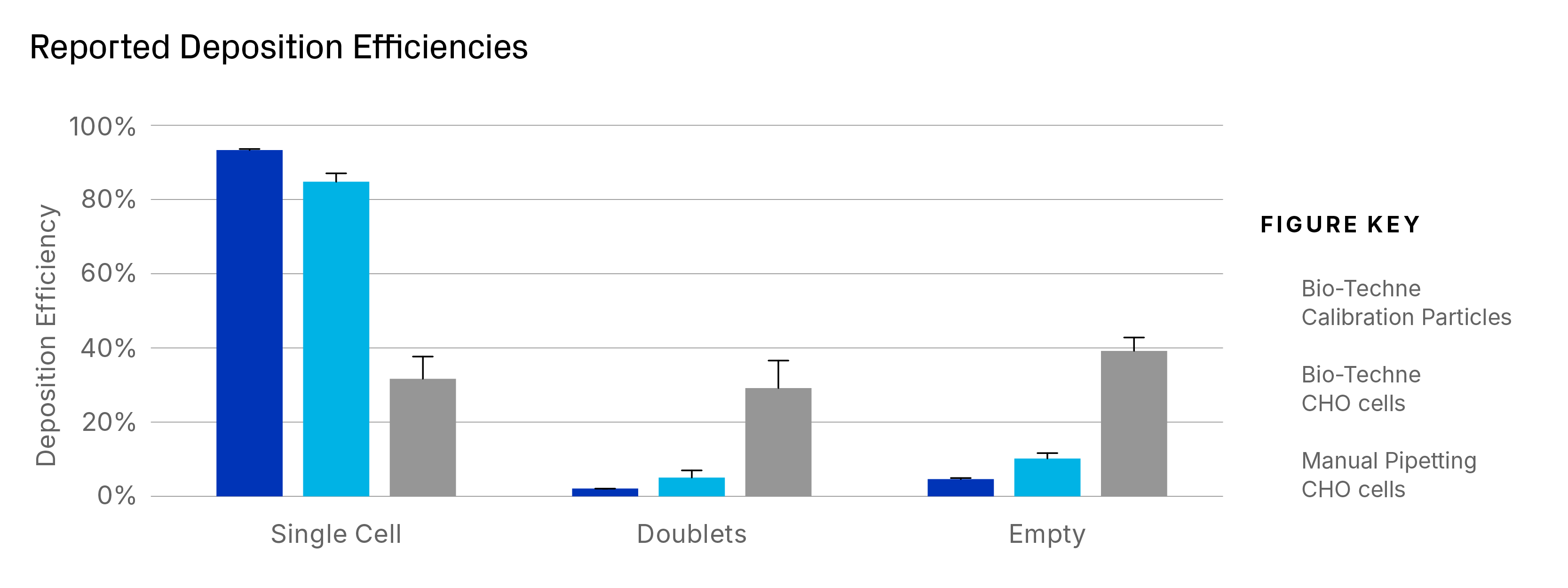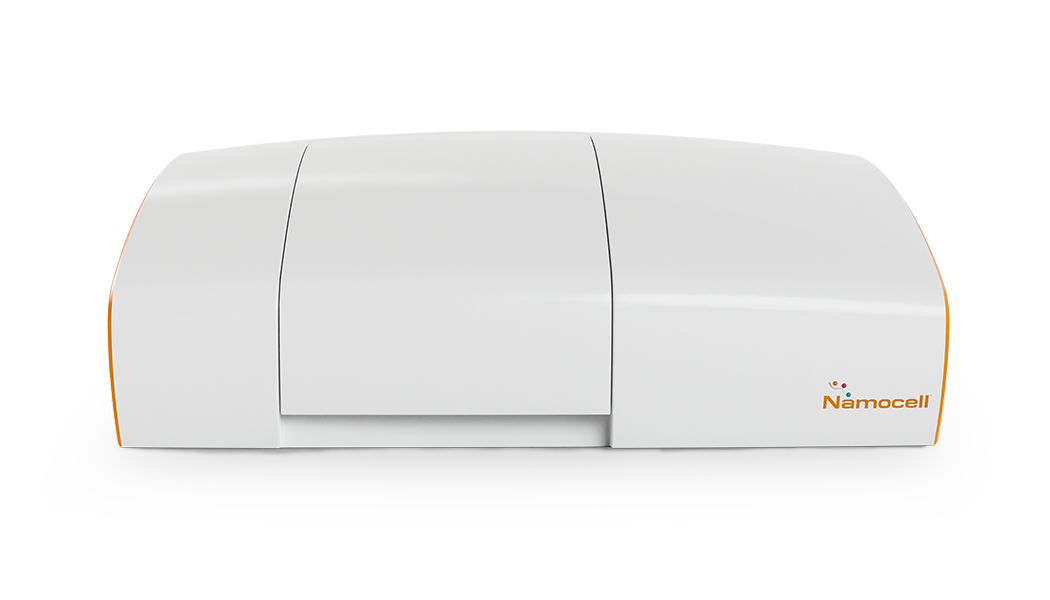Single Cell Isolation
The Pala Cell Sorter and Single Cell Dispenser is a platform that:
- Boosts efficiency in the lab by isolating and dispensing cells in ≤ 7 minutes
- Gives you high-quality, viable cells through gentle sorting (<2 psi)
- Adapts to a wide range of cell densities, from as little as 100 cell/mL
- Ensures consistency and ease through full automation
- Fits into your budget and cell culture hood by being affordable, light-weight, and compact

Why Pala and Hana for your Single Cell Isolation needs?
Sort Cells According to Your Requirements
Leverage the powerful combination of microfluidics, flow cytometry, and liquid dispensing in the Pala and Hana systems to:
- Liquid Dispensing: Get single cells dispensed into 96- or 384-well plates in minutes
- Microfluidics in a Cartridge: Enables sterile single cell sorting
- Flow Cytometry: Gently sorting for maximum cell viability, no prior experience with flow cytometry needed
Accelerate Your Workflow

*Chakrabarti, Lina, et al. “Simplifying Stable CHO Cell Line Generation with High Probability of Monoclonality by Using Microfluidic Dispensing as an Alternative to Fluorescence Activated Cell Sorting.” Biotechnology Progress, 10 Mar. 2024, https://doi.org/10.1002/btpr.3441. Accessed 11 Apr. 2024.
Comparison of Pala Single Cell Dispenser with traditional methods of sorting cells for clonal outgrowth. Pala Single Cell Dispenser, was used alongside limiting dilution (LDC) and FACS sorting to sort CHO host cells for a single cell cloning protocol sorting. Results highlight the higher cloning efficiencies obtained with Pala compared with LDC and FACS.
Reliable deposition of single cells into tissue culture plates (one cell per well) is an essential consideration for clonal cell isolation and expansion. Pala and Hana Cell Sorter and Single Cell Dispensers provide a fast and reliable alternative for single cell isolation, alleviating the need for manual pipetting while preserving cell integrity by sorting at a gentle pressure of <2 psi.
Deposition rates were calculated for single cells, doublets, and empty wells after visual inspection scoring of seven plates in each condition.
Pala Cell Sorter and Single Cell Dispenser
Configured with two lasers for up to 11 detection channels.
| Hana | Pala | |
|---|---|---|
| Laser 1 | 488 nm | 488 nm |
| Laser 2 | N/A | 405 nm or 561 nm |
| Detection Channels | FITC / GFP, PE / PI, Forward & Side Scatter | Up to 11 channels, Forward & Side Scatter |
| Dimensions | 19 x 14 x 8" | 25 x 14 x 9" |
| Weight | 22 lbs | 35 lbs |

Breaking Barriers in Cell Engineering with Single Cell Sorting Innovation
This eBook, produced in collaboration with the team at Drug Target Review focuses on how advances in single cell sorting technology are furthering research in CRISPR gene editing and cell engineering. The team shares insights, looks at recent peer-reviewed publications, and talks one on one with the scientists.
10X Genomic Workflows
Single cell sequencing methods have emerged as powerful tools for identification of heterogeneous cell types. In this application note, we compared single-nucleus RNA sequencing (snRNA-seq) data from dissociated nuclei using traditional methods compared to sorting nuclei using the Pala cell sorter. The sequencing data showed the Pala system was able to sort nuclei to successfully clear debris from brain and kidney dissociated tissue, recover more cells for downstream 10X genomic workflows, and displays cleaner sequencing data with higher gene recognition and characterization of diverse cell types.
Single Cell Deposition Efficiency
The limiting dilution method for deposition of single cells into well-plates is manual, low throughput and can be poorly efficient in seeding one cell per well. This can result in the need for handling of larger number of plates, making the process even more tedious and time- and reagent-consuming. Bio-techne’s single cell dispensers provide a fast and reliable alternative for single cell isolation with increased accuracy in dispensing single cells into each well while preserving cell integrity with gentle sorting pressure. The results of this comparative study serve as a reference for expected deposition efficiency with the Pala platform.











